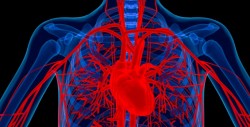
The binding of bacteria to human platelets is important for the development of infective endocarditis, a life-threatening infection of the heart. Streptococcus gordonii, a leading cause of endocarditis, uses a protein called GspB to attach to a receptor on human platelets, but little is known about the molecular details of this interaction.
Graduate student Tasia Pyburn, Tina Iverson, associate professor of pharmacology, and colleagues determined the crystal structure of the region of GspB that binds to platelet receptors. Using their structural map, the investigators predicted how to disrupt the interaction. They made mutations in GspB that prevented S. gordonii from binding to platelets and reduced endocardial infections in a rat model.
The studies, reported in PLoS Pathogens, provide the first structural information detailing the molecular interactions between a GspB-type of bacterial binding protein and its host receptor. The findings suggest that this interaction may be a drug target in streptococci that could be used to prevent endocardial infections without increasing antibiotic resistance.
This research was supported by grants from the American Heart Association, the Vanderbilt Institute of Chemical Biology, the Vanderbilt Institute for Clinical and Translational Research, the National Institute of General Medical Sciences and the National Institute of Allergy and Infectious Diseases.